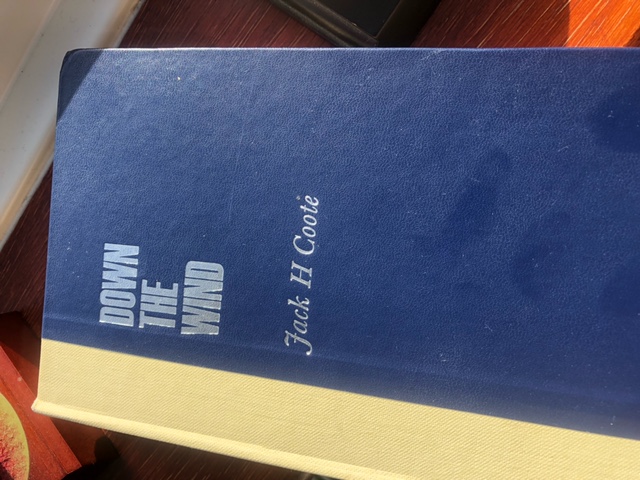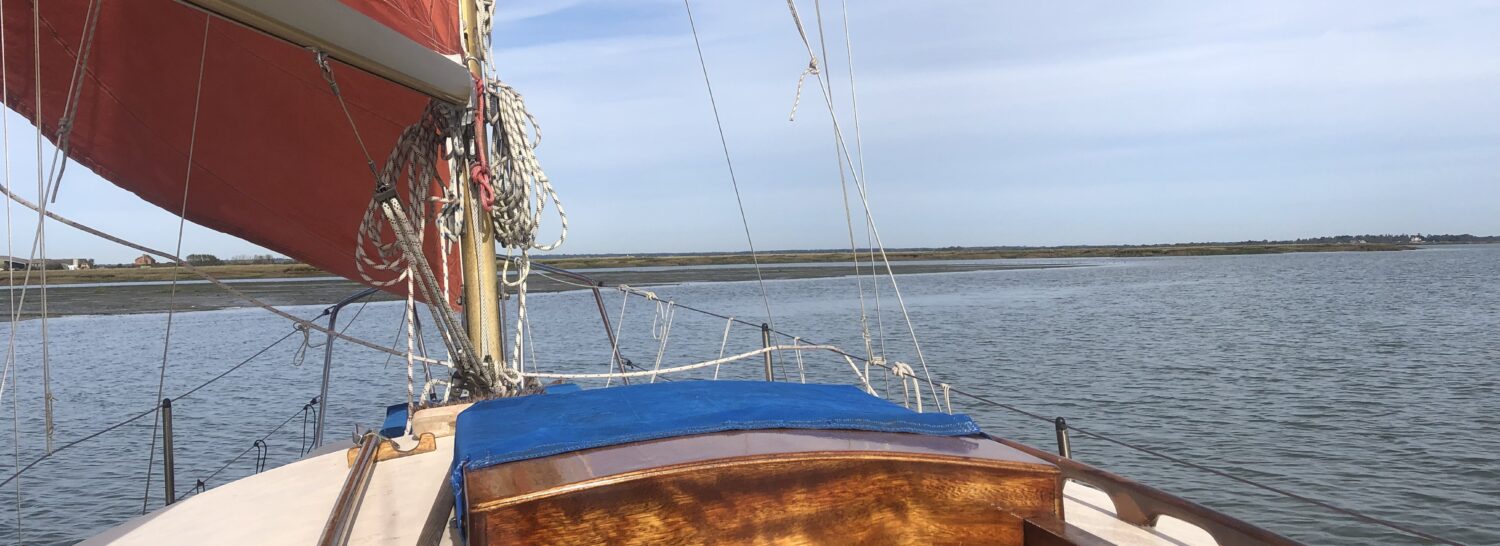Down the Wind appeared from beneath the Christmas tree some months back – kind of Father Christmas, I thought at the time. So, I took it into hospital with me to give sailing succour when disabled with a new knee!
Have I read it before? Not sure: couldn’t find a copy on my well stocked shelves, but may have done a very long time ago.
Down the Wind was published by Hodder & Stoughton in 1966, and is a compilation of articles from varying magazines from the obscure club type to the public and excerpts from books dating back to the germination years of sail cruising with the likes of R T McMullen, Claud Worth, Sir Alker Tripp amongst others. Many pieces are by authors from club annuals, such as the Royal Cruising Club and the Clyde Cruising Club etc.
The book begins with excerpts from sailing fiction. Few will know that the Hammond Innes yarn, The Mary Deare, was spawned from an encounter at sea in real life… whilst most sailors of a broad reading spectrum will know, We Didn’t mean to go to Sea, by the inimitable story teller, Arthur Ransome – the excerpt covers the ‘realisation’ of their situation after losing the anchor and being swept out of Harwich Harbour…
There are two sections of yachts in action pictures – mostly in a bit of a blow! A few are of the tranquil ‘normal’ type…

The first thing that is clear is that it is a ‘man’ book for women are barely mentioned. There is the odd piece where a woman features, apart from the couple written by women. Racing off-shore features heavily, in conditions in which the majority would avoid or not contemplate to cruise in.
A touching piece comes at the end of an excerpt from, A White Boat from England, pub 1951, by George Millar. he and his wife depart in the hours before dawn, quietly down the Lymington River (before the advent of plastic and massed marinas) bound across channel to France. It was a good passage but with rising wind they slipped into the Pointrieux River to anchor in seclusion above a village.
After discussing differing passages, good a anchorage, warmth and comfort below, the author says, ‘It is to enhance such contrasts with the sea and the wind that the truly wise yachtsman sails in the company of a beautiful or intelligent woman- it may be his wife.’
Setting aside a tendency towards misogynism, indeed. It is the reason I have always tried to ensure the cruising comfort of my mate, not overtaxing her, that I have a dear mate still sailing with me.
How many wives/partners actually sail? Not many…
Women writers or otherwise don’t feature greatly apart from two writers in pieces from from a novel by E Arnot Robinson, The Regatta, a great yarn based around Pin Mill on the River Orwell in Suffolk.
The other, Felicity Ann in New York by Ann Davison ‘laughing’ about chauvinistic attitudes of men discussing her boat and whether or not it could be sailed across the Atlantic and certainly not with the author, a woman, who had…
Just once are children mentioned – in Dawn at Crinan by ‘TEW’ where the author has spent a lazy half-hour watching the dawn while his crew get up, commenting on the chattering excitement of two young boys with their father heading towards the anchorage and their dinghy…
Then, as he re-boarded his boat with the waft of bacon emanating from the hatch, he pauses to watch as two, ‘little girls exploded out of the fore-hatch of a boat lying three out astern of us, shouting with laughter and calling to each other…’ they scrambled ashore and raced to the sea lock.

An excerpt ‘Fitting Out‘ from, A Capful of Wind, by Aubrey de Selincourt, 1948 struck a chord. An owner is fitting out with a friend who is clearly of more robust stature and probably younger. He discusses fitting out done by owners and those tasks left to a yard. A paragraph about antifouling too…
‘Now scrubbing and antifouling a yachts bottom … is hard work. It has to be done against time, to get the paint on before the tide is up again.. The composition works extremely stiff, and certain parts of the boat’s bottom are difficult to reach. The work gives one a crick in the neck, an aching back and a numb wrist.’
I bless my dear mate: she has for so long done most of ours, leaving me to cut in and do boot top…
Most owners thee days antifoul in the boat or club’s yard, but many still use a slipway, or even the beach.
So, did I enjoy the read. Yes, I did.
Like may books in this genre, dating back to over a hundred years ago, and less, the language can be ‘old fashioned’ and, don’t be surprised to find sexism or views of a misogynistic tendency. We’re ‘better’ people now, hopefully, in inclusivity…
If you have a copy lurking on your book shelf, give it another airing. If never read, well, you’re missing out on a myriad of sailing mignons, which may set you off on finding the books from which the pieces have been taken…
Enjoy!
